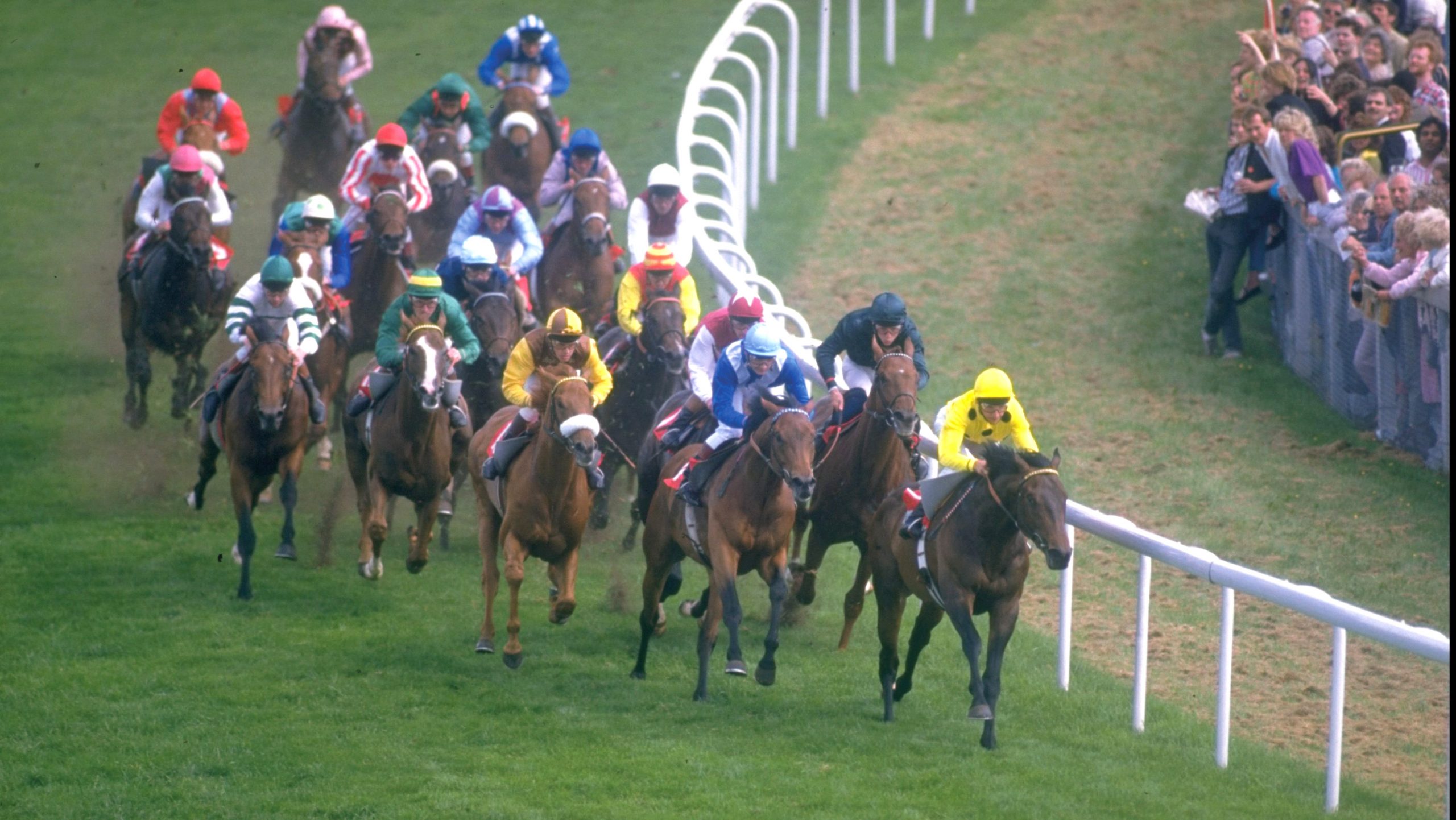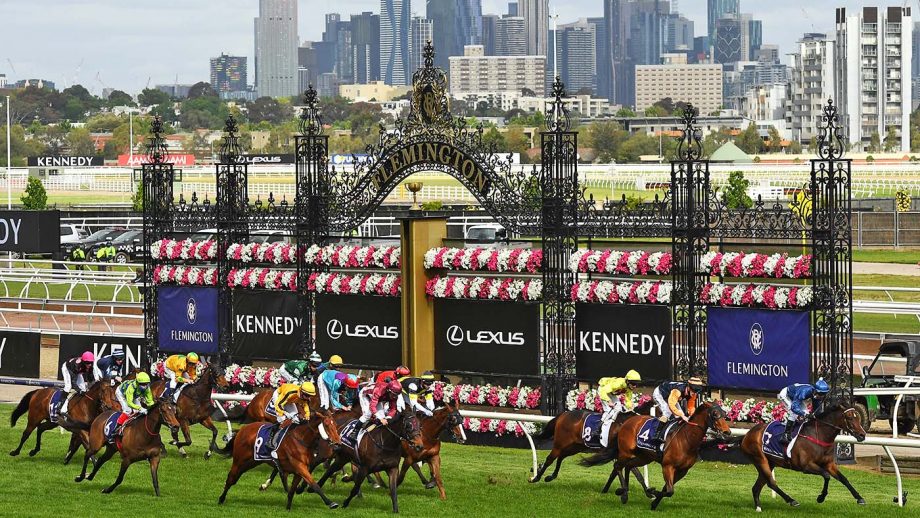This week marks 50 years since Mill Reef won the Derby, during a spectacular Classic campaign. Kate Johnson charts the career and astonishing survival of the “little horse with a big heart”
“HE was a life-changer for all of us,” says Emma, wife of trainer Ian Balding. “He was the most perfect horse, small of stature and big of heart, and his owner was one of the finest men you’d ever meet.”
She could only be talking about the record-breaking Mill Reef and his owner and breeder American billionaire philanthropist Paul Mellon. Mill Reef arrived in Britain as a yearling in 1969 from Paul’s Rokeby Estate in Virginia to Ian Balding’s Kingsclere training yard, and lit up Flat racing as a two-, three- and four-year-old, until injury nearly ended his life.
It was love at first sight for his groom, John Hallum, dispatched by Ian to collect the bay colt from the airport. John later recalled: “There was Mill Reef and there were three or four great big giant horses. I saw this little pony covered in paddock scars, and I thought, ‘This will do me,’ and that was it.”
Named after the Antigua club where Paul Mellon kept a holiday home, Mill Reef wasted no time in displaying what Emma calls his “electric turn of foot”. Watching the gallops at Kingsclere one morning in February 1970, Ian told John to quicken by half a stride. Mill Reef stretched effortlessly away, leaving his stablemates 20 lengths behind and struggling. Ian berated John afterwards for not sticking to the orders.
“I will always remember his reply,” Ian wrote in his memoir Making the Running, “Guv’nor, I was only cantering.”

Trainer Ian Balding cites Mill Reef’s “most wonderful temperament” as one of the horse’s greatest assets
Mill Reef’s startling debut as a two-year-old at Salisbury the same year saw him cruise past Lester Piggott on favourite Fireside Chat. His jockey, Geoff Lewis, who partnered him in every race, sat motionless and later recalled: “He flew out of the gate first out and I was five in front before you knew it.”
He raced five more times that year, barely off the bridle, including the Coventry Stakes at Ascot which he won by six lengths, and the Gimcrack Stakes at York in heavy going after a torrential night, by 10 lengths. Always in his trademark sheepskin noseband, and the striking black and gold colours, he lost just once (after a difficult journey) in the Prix Robert Papin at Maision-Lafitte to the similarly brilliant My Swallow.

Mill Reef winning the King George VI and Queen Elizabeth Stakes
IT was his campaign as a three-year-old that set the world alight. He won the Greenham Stakes at Newbury before suffering the second and final loss of his career to Brigadier Gerard, probably the greatest miler ever, in the 2000 Guineas on 1 May 1971.
Come Derby Day a month later, a nervous Ian, Emma and her mother were driving to Epsom when they got stuck in traffic. Time ticked agonisingly by until there was nothing else for it; Ian leapt out of the car and jogged, in top hat and tails, two miles to the course. He made it (as did his family) and they watched enthralled as Mill Reef beat Linden Tree by two lengths.
Paul Mellon, who had flown in from America, was ecstatic (Emma remembers “how much pleasure he always took in this horse”), and Ian was euphoric but – more than that – relieved. It wasn’t until they returned to Kingsclere that the monumental achievement sank in.
Emma says: “I think my favourite memory was the day after the Derby. He was led out for the people in the village to come and see him and he just lapped it up. He knew they’d just come to see him, he just stood there, the big I am.”
His groom John agrees: “He loved humans and being the centre of attention”.
“You dread them losing their crown,” says Emma, but there was nothing to fear with an owner not frightened to keep testing this exceptional thoroughbred. He cruised from strength to strength, with victory in the Eclipse Stakes at Sandown, and the King George VI and Queen Elizabeth Stakes, before heading to France in October for the Arc.

Mill Reef’s fluid movement and supreme athleticism set him apart
His balance was so spectacular that at a pre-race gallop in very soft ground, he barely left a mark in the mud. In Lord Oaksey’s book The Story of Mill Reef, he quoted Ian Balding remarking, “It was as though a ghost had galloped by.”
He went on to beat the French star Pistol Packer on her home turf in front of thrilled crowds sporting Mill Reefs’ colours. Ian later said it was the best day of his training life.
Paul Mellon kept Mill Reef in training as a four-year-old and in April 1972 he returned to France to win the Prix Ganay, but when he won the Coronation Cup at Epsom by “only” a neck, something was clearly wrong. He was suffering from a virus and his much heralded rematch with Brigadier Gerard was postponed.

A statue commemorates the great horse at Kingsclere
He recovered, but then exercising on the gallops, came what Emma calls, “the worst morning ever”. She says, “Ian came in white as a sheet and said, ‘Mill Reef’s broken his leg’.”
When Ian made the call that no one ever wants to make – or receive – to tell Paul the desperate news, his immediate response was, “How is poor John?” – quite the mark of a man.
As much as the team around Mill Reef was intimate – one groom, one trainer, one jockey, one owner – he was also a superstar, and as such public property. Emma remembers that it was “the first experience any of us had of a racing story going onto the front pages of the national papers; people were camping on the verge outside the yard waiting for news”.
After consultation it was decided to operate on Mill Reef’s shattered cannon bone at Kingsclere. Veterinary surgeon Edwin James Roberts (Jim) kept him only lightly under anaesthetic for the seven-hour operation fitting pins, plates and screws into his leg, and adding a cast from hoof to shoulder, observed by Ian. It was absolutely pioneering.
When Jim said, “He’s going to be all right,” it meant more to John Hallum than any of the glory days.

After a pioneering operation and months of box rest, Mill Reef enjoyed devoted care from the Kingsclere team as he was slowly taught how to walk again in a cast – he would go on to sire multiple Group One winners in his second career at stud
WHAT set Mill Reef apart was a mixture of fluid movement – his gait was neither overly economical or extravagant – and supreme athleticism. There was no distance, and no ground, he couldn’t win on – in fact, Ian had remarked, “The further he went, the faster he went.” His temperament also set him apart. His breeding hadn’t indicated this would be a given, but as John says, “despite showing a few signs of temper”, he went the right way.
Emma concurs: “He had a bit of attitude but it didn’t get in the way of his brilliance.”
At an event at the National Stud to commemorate what would have been Mill Reef’s 50th birthday, Ian told the crowd: “He had the most wonderful temperament and was an absolute delight. I can’t remember a thoroughbred colt being so gentle and sensible”.
It may have been this temperament that saved him. Ian recalled that when he broke his leg, he stood calmly grazing while waiting for the horsebox, and then brilliantly managed to leap into the box on three legs. Thanks to devoted care, he recovered mentally and physically from months of box rest, and being taught how to walk – slowly – in a cast.
In another generous gesture, Paul Mellon kept him in England, rather than a more lucrative return to stud in America, and the day came when he left Kingsclere for the last time to start a new career at the National Stud in Newmarket.
For Emma, it was relief that he had survived to be able to go anywhere and for John, a bittersweet goodbye. He visited Mill Reef six months later at stud. George Roth the stallion man gave John permission to go into the field with him which no one else was allowed to do. He whistled for him and he immediately pricked his ears and came straight across to him.
Jim Roberts did not send a bill until Mill Reef’s first mares were in foal. The bill read, “For saving Mill Reef’s life: £25,000.” That’s about £300,000 in today’s money. Ian was outraged and called Paul Mellon who yet again showed his generosity and said, “Pay it.”

Mill Reef wins the 1971 Derby
MILL REEF went on to sire Group One winners and two Derby winners, and died aged 18 in 1986. A life-size statue commemorates him at the National Stud, at Kingsclere and at Rokeby Estate. There is a permanent exhibition about him, including his X-rays, at the National Horseracing Museum in Newmarket.
Alexandra Fletcher, its packard curator, says Mill Reef’s impact is significant.
“He showed you don’t write horses off; he went on to sire winners,” she says. “He changed attitudes to how we see racehorses; you measure a horse’s life in decades. He proved you can come back from injury. He exemplifies the triumph of hope over adversity.
“I admire the leap of faith the trainer, stable staff and owner took; they were all going to invest in this and not cause further distress, they were going to improve the horse’s life and there would be a further point to that life. For me that’s an inspiring message of hope and commitment and giving back to a horse that has given his all.”
“Watching him race made the hair on my neck stand up”
BROADCASTER and author Brough Scott knew Mill Reef well (“very sweet, but he wasn’t a pet”) as he filmed a documentary about him. Watching him race “made the hair on my neck stand up… in a race you play your best card last and Mill Reef extended the distance between him and the second horse in the last 100 yards. He ran through the line.”
The final scene of the film shows groom John Hallum saying goodbye and walking away, alone, as Albert Finney voices Hugh McIlvanney’s words: “that Mill Reef… he was something to brighten the morning”.
Statistics

BORN on 23 February 1968, Mill Reef died on 2 February 1986 and is buried at Newmarket’s National Stud.
His 14 races (two seconds and 12 wins) included breaking the Sandown Park track record in the Eclipse Stakes, winning the Derby, the King George at Ascot by six lengths and being the first British winner of the Prix de l’Arc de Triomphe for 23 years.
His record of six consecutive Group One victories lasted for 30 years until Rock Of Gibraltar won seven in 2002. His winnings equated to £4m today.
He sired multiple Group One winners and two Derby victors: the 1978 winner Shirley Heights (who sired the 1985 winner Slip Anchor) and the 1987 winner Reference Point (pictured, yellow silks).
Breeding

Owner Paul Mellon with his winner Mill Reef at Ascot.
BRED by lifelong horseman Paul Mellon (pictured with Mill Reef), who established the 4,000-acre estate, Rokeby Stables, in Virginia in the 1940s. Mill Reef was sired by Never Bend, and was the second foal out of Milan Mill. She, like her famous son, spent seven months with her injured leg in plaster as a foal. She raced only once.
Paul Mellon once said: “Over the years, I’ve bred some very good horses, but a hundred years from now, the only place my name will turn up anywhere will be in the stud book, for I was the breeder of Mill Reef.”
You may also be interested in…

Relive 5 of the greatest Derby moments
Ahead of this week’s Cazoo Derby (5 June 2021), we pick out five of the greatest winners of the Epsom

New rule for horses to have scans before major race raises questions *H&H Plus*

Top jumps trainer Henry de Bromhead: ‘The past few weeks have been unbelievable – it’s what you dream of’ *H&H Plus*

4.30am starts, 40,000 steps a day and the ‘best time of my life’: Henry de Bromhead’s travelling head lass reflects on a ‘crazy’ few weeks

Subscribe to Horse & Hound magazine today – and enjoy unlimited website access all year round
Horse & Hound magazine, out every Thursday, is packed with all the latest news and reports, as well as interviews, specials, nostalgia, vet and training advice. Find how you can enjoy the magazine delivered to your door every week, plus options to upgrade your subscription to access our online service that brings you breaking news and reports as well as other benefits.

